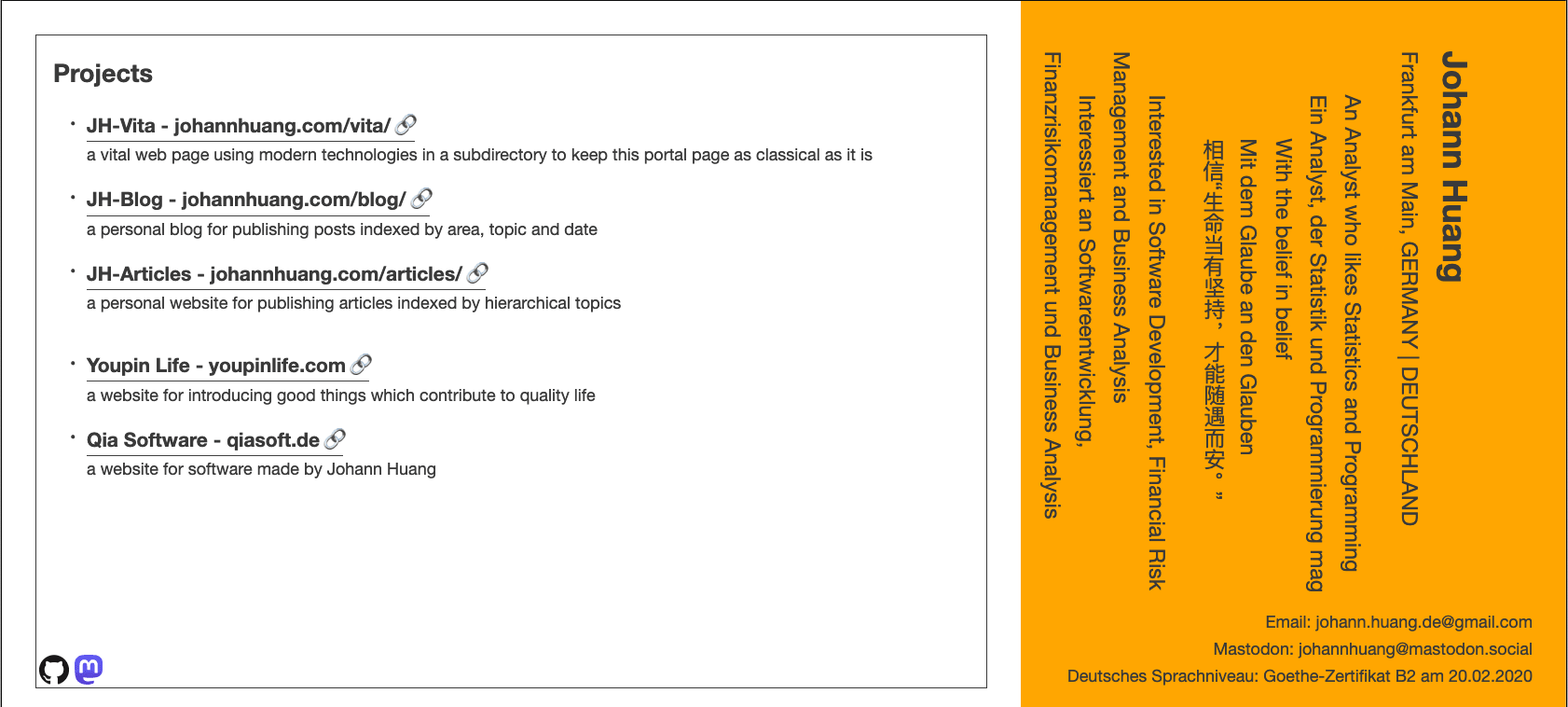qia-image - An HTML Custom Element to Supplement or Replace the img Element
- UUID: 63347bb2-38ce-4766-a59a-89c864d901d5
- Links
- as part of JH-Articles: Web Libraries ~ qia-image
- Timestamps
- 20231209.Started this article
- 20231209.Hade the full strucutre
What is <qia-image>?
- a web GUI widget component for displaying a single image as well as annotation with HTML custom element APIs
<qia-image>appears in two forms in terms of getting image source<qia-image>withoutsrcbut with a childimgelement as its first non-blank child node<qia-image>will take use of thecurrentSrc,alt,titleandstyleattribute values from theimgelement- for the image on focus embedded inside
<qia-image>
- for the image on focus embedded inside
<qia-image>will take all other child nodes as a displayed annotation for the image sourced fromimg[src]- when there is no other non-blank child node than
img[src], theimg[alt]will be used as the annotation
- when there is no other non-blank child node than
<qia-image>withsrc<qia-image>will take all its child nodes as a displayed annotation for the image source fromqia-image[src]
<qia-image> in comparison to <img>
<qia-image>can have children elements as image annotation- where the self-closing
<img>only can havealtandtitleas supplements to the image on focus
- where the self-closing
<qia-image>accepts image source in two ways: either from the attributesrcor from its first non-blank<img>child node- where
<img>accepts image source from attributesrcandsrcset
- where
Use Cases
When or where is qia-image needed? Why necessary?
- when caption text is needed for an image unit
- when limited space is left or preferred for an image and no scaling but scrolling is preferred
Features
What does qia-image bring?
- qia-image allows annotation text provided to the image
- qia-image enforces max-height 80vh and overflowY auto
- comparing to img, this saves space without loosing content by allowing scrolling
- for images that are indeed tall with information
APIs
How to use?
<qia-image>
<img src="" alt="">
</qia-image>
<qia-image src="">
Annotation HTML
</qia-image>
Live Demos

Code Examples
<qia-image>
<img src="assets/20231102-000255.png" alt="Caption: Slotted/Wrapped Qia Image" title="Tooltip: Qia Image 1" style="width: 400px; height: 300px;">
</qia-image>
<qia-image style="width: 400px; height: 400px;">
<img src="assets/20231102-000255.png" alt="Caption: Slotted/Wrapped Qia Image">
The above image is an example.
(It is taken on 20231101.)
<img src="assets/20231102-000350.png" alt="Caption: Qia Image 2" title="Tooltip: Qia Image 2">
</qia-image>
<qia-image style="width: 400px; height: 400px;">
The following image is an example.
<img src="assets/20231102-000255.png" alt="Caption: Slotted/Wrapped Qia Image">
(It is taken on 20231101.)
<img src="assets/20231102-000350.png" alt="Caption: Qia Image 2" title="Tooltip: Qia Image 2">
</qia-image>
<qia-image style="width: 400px;">
<img src="assets/20231102-000255.png" alt="Caption: Slotted/Wrapped Qia Image">
The above image is an example.
(It is taken on 20231101.)
<img src="assets/20231102-000350.png" alt="Caption: Qia Image 2" title="Tooltip: Qia Image 2">
</qia-image>
<qia-image src="assets/20231102-000255.png" title="Tooltip: Qia Image 1" style="width: 400px; height: 300px;">Caption: Qia Image 1</qia-image>
<qia-image src="assets/20231102-000255.png" title="Tooltip: Qia Image 1" style="width: 400px; height: 400px;">
Caption: Qia Image 1 <br>
The following image is for describing the main image
<img src="assets/20231102-000350.png" title="Tooltip: Qia Image 2">
</qia-image>
<qia-image src="assets/20231102-000255.png" title="Tooltip: Qia Image 1" style="width: 400px; height: 400px;">
<img src="assets/20231102-000350.png" title="Tooltip: Qia Image 2">
The above image is for describing the main image <br>
Caption: Qia Image 1
</qia-image>
<qia-image src="assets/20231102-000255.png" title="Tooltip: Qia Image 1" style="width: 400px; height: 400px;">
Caption: Qia Image 1 <br>
The following image is for describing the main image
<qia-image src="assets/20231102-000350.png" title="Tooltip: Qia Image 2">Caption: Qia Image 2</qia-image>
</qia-image>
<qia-image src="assets/20231102-000255.png" title="Tooltip: Qia Image 1">
Caption: Qia Image 1 <br>
The following image is for describing the main image <br>
<qia-image src="assets/20231102-000350.png" title="Tooltip: Qia Image 2" style="width: 400px;">Caption: Qia Image 2</qia-image>
</qia-image>
More
More Use Cases
The use cases I have (as part of a bigger blueprint) include the following
- using
<qia-image>as a drop-in replacement for<img>in HTML documents- although
<qia-image>lacks certain features comparing to<img>such as the support ofsrcset - the HTML documents can be resulted from converting Markdown
- although
- using
qia-imageas an cutomized alternative or enhancement toimgfor Markdown notion![]()in Markdown![]()which could include several different variants- the standard one- non-standard but also exists
- indicating
![]()asqia-imagecan have several different ways- making
qia-imagethe default translation for![]()- which results in a pattern as
<qia-image src="" title="">alt</qia-image>
- which results in a pattern as
- surround
![]()with<qia-image>and</qia-image>- which results in a patterns as
<qia-image><img alt="" src="" title="" /></qia-image><qia-image><img alt="" src="" title="" />...MoreOtherNodes..</qia-image>
- which results in a patterns as
- making
- using
<qia-image>for more annotation to the image on focus- in patterns where innerHTML is the annotation as
<qia-image src="">innerHTML</qia-image><qia-image><img alt="" src="" title="" />innerHTML</qia-image>
- in patterns where innerHTML is the annotation as
But down to the earth, why I made it? For my own Markdown parser to support syntax beyond just ![](), to use in places like my websites such as JH-Articles. As a sneak peak, there will also be something as !qia-image[innerHTML](src "title") as well as !qia-audio{"lrc-src": "..."}[innerHTML](src "title") and qia-link[innerHTML](href "title").
* cached version, generated at 2024-01-10 13:55:18 UTC.
Subscribe by RSS